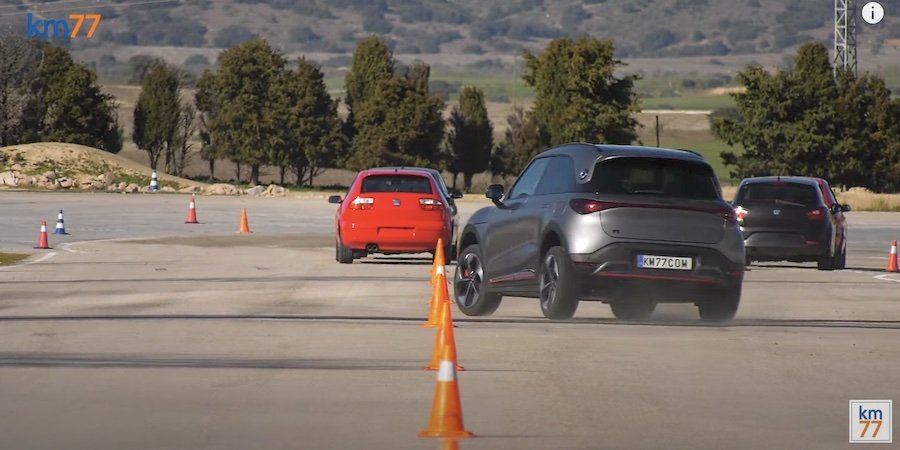Watch Smart Brabus #1 Fail The Moose Test Spectacularly

Smart – the small car brand that was once founded by Daimler – is now a joint venture project between Mercedes-Benz and Geely, focused on producing small and compact battery-powered vehicles. The first product to arrive from the cooperation was the Smart #1, which debuted last April and was later joined by a Brabus version. It has a dual-motor electric powertrain and visual enhancements, though it lacks upgrades of the suspension and handling. How does that affect its road behavior? It’s time to find out.
The folks over at km77.com recently evaluated the Smart #1 Brabus on the moose test and the results were, well, way below our expectations to say the least. Being an attempt for a performance model, the electric crossover has up to 434 horsepower (324 kilowatts), which is a healthy boost over the standard model’s 268 hp (200 kW). The lack of any tweaks to the chassis and steering, however, means the vehicle is prone to heavy oversteer. In the first attempt around the cones with a speed of 48 miles per hour (77 kilometers per hour), the Smart #1 Brabubs was completely uncontrollable.
After a few more attempts, the test drivers finally managed to find a velocity at which the model didn’t hit any cones. That speed was only around 40 mph (65 kph), which is a very modest figure for an electric vehicle. Larger and less sporty models such as the Hyundai Tucson PHEV and Kia Niro were both significantly faster and safer in the maneuver. The Smart #1 Brabus, in turn, continued showing oversteer, though less severe than at higher speed.
What’s the reason for what we would describe as a complete failure of the moose test? For starters, the mentioned lack of upgrades to the suspension surely has a negative effect on the powerful electric crossover. More importantly, however, the test drivers point out the electronic stability system was way too permissive and there was also a significant body roll. The tires with low rolling resistance are a factor, too.
Related News
